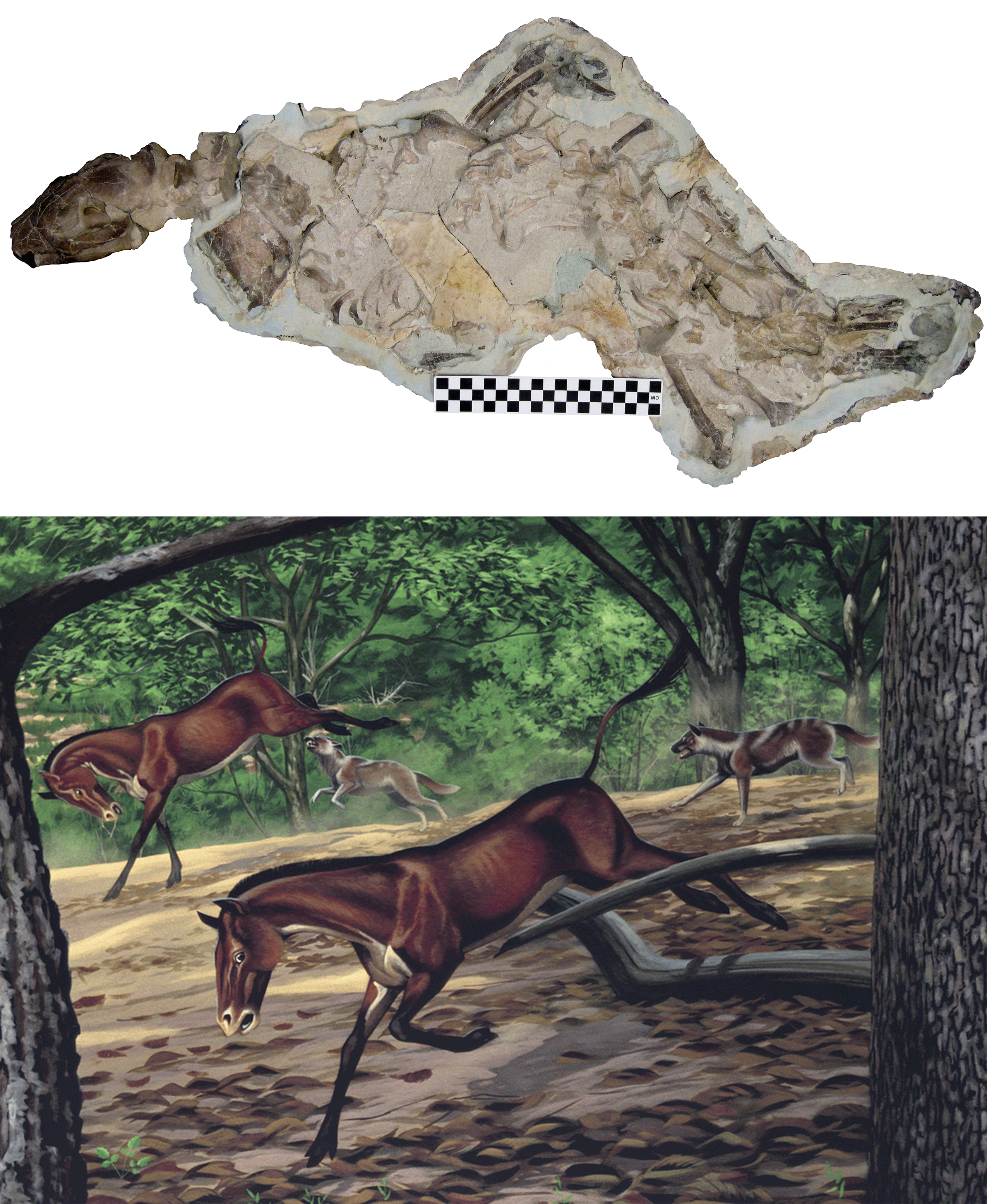|
You are viewing ARCHIVED content published online before January 20, 2025.
Please note that this content is NOT UPDATED, and links may not work. For current information,
visit https://www.nps.gov/aboutus/news/index.htm.

NPS Photo / Mural by Roger Witter
Contact: John Day Fossil Beds National Monument Paleontology KIMBERLY, OR.- The cheetah is the fastest land animal, sprinting at top speeds of 60 mph to catch their dinner. A new study examines how limb structure reflects locomotion in the cheetah and other carnivores, including some long extinct species. Besides cheetahs, the mammalian order Carnivora includes a wide range of familiar animals, including cats, dogs, bears, and hyenas. These species make their living in many different ways and can be specialized for running, climbing, digging, and swimming. The study, published in the Journal of Morphology, also helps to reveal the habits of extinct species, like saber-tooth cats and dire wolves. Dr. Joshua Samuels, from John Day Fossil Beds National Monument, and colleagues analyzed over 100 living species of carnivorans, ranging in size from tiny weasels to gigantic polar bears, to analyze how limb proportions relate to locomotor habits of these species. The research found clear differences in species with different ecologies: runners have long, lightly built limbs; swimmers have heavily muscled limbs and elongate feet; diggers have short, stout heavily muscled limbs and long claws; and climbers have long fingers. This study also shows us what some extinct animals were doing. For example, very early dogs (like Hesperocyon gregarius) were good climbers and an extinct group of sabertooths called nimravids, which looked a lot like cats, included strong climbers and prey ambushers, as well as one early running adapted species (Nimravus brachyops). Additionally, the entire carnivore fauna from the tar pits at Rancho La Brea was examined. Giant American lions (Panthera atrox) and sabertooth cats (Smilodon fatalis) were terrestrial prey ambushers, while Pleistocene coyotes and dire wolves (Canis dirus) were better runners than their living counterparts. Co-author, Dr. Julie Meachen at Marshall University said, "Many of the species at Rancho La Brea were doing something different from their living relatives. For instance, Pleistocene pumas had longer legs and were more adapted for running than those alive today". Not all Rancho La Brea carnivores were different; the wolves, foxes, badgers, bobcats, and lions from the last ice age were indistinguishable from their living relatives. This study suggests similar adaptations have evolved independently in different families to facilitate running, climbing, digging, and swimming habits.This study will help other researchers to study locomotor evolution of carnivorans and will allow more accurate reconstructions of past environments. The new study can be found in the current issue of the Journal of Morphology: http://onlinelibrary.wiley.com/doi/10.1002/jmor.v274.2/issuetoc Additional information about John Day Fossil Beds National Monument is available online at: More information about the La Brea Tar Pits can be found at: About the National Park Service. More than 20,000 National Park Service employees care for America's 395 national parks and work with communities across the nation to help preserve local history and create close-to-home recreational opportunities. Learn more at www.nps.gov. |
Last updated: December 14, 2017
